Ethics, Nutrition and Navigating Change
Many people come to the paleo community after years of veganism or vegetarianism. The reason is usually a health crisis, which can be shocking after eating a diet you thought was healthy for years. Some people embrace meat again without difficulty, but others struggle with ethical concerns, taste and texture issues, and even a loss of identity. In today’s podcast, I interview Registered Dietitian Diana Rodgers on the nutritional difference between these diets, and how to be an Ethical Omnivore. I also interview nutritionist Kinsey Jackson on her personal journey transitioning from vegetarian to paleo. It was a difficult change for her, but led to dramatic improvements in her autoimmune health.
Listen to the Show
- Subscribe to my podcast through your favorite podcast app: iTunes, Stitcher, Google, TuneIn, Spotify, Amazon, etc.
- You can also listen to the episode right here through the player below, and if you subscribe to my newsletter you’ll get notified of future episodes.
Podcast: Play in new window | Download
Show Notes
- Intro (0:00)
- Thank You to Our Podcast Sponsor – Paleo on the Go (1:46)
- A frozen meal delivery service, they have a large menu of items for the paleo autoimmune protocol (AIP).
- Use the code PHOENIX for 10% off your first order.
- Meet Diana (3:02)
- Diana Rodgers is a Registered Dietitian and the author of two books: Homegrown Paleo and Paleo Lunches and Breakfasts On the Go. She is a strong advocate for sustainable agriculture and lives on a working organic farm. She is also the voice behind the popular Sustainable Dish blog and podcast.
- Diana has celiac disease, but went undiagnosed throughout her childhood. She had trouble gaining weight, was always hungry, and thought daily stomach pain was normal. She was diagnosed at age 26. When she went gluten-free, her stomach felt better, but she continued to have blood sugar issues, needing to eat every 1-2 hours. It wasn’t until she went paleo that her blood sugar stabilized.
- History of Vilifying Meat (8:50)
- Kellogg’s Corn Flakes were invented to try to get people to eat less meat, because Kellogg felt that meat increased people’s sexual desire and that sex was unhealthy for mind, body and soul. Crazy, but true! This association of vegetarianism with purity and health continues as a cultural belief. However, it’s not grounded in science.
- Nutritional Difference Vegan, Vegetarian and Paleo (10:32)
- Ideally, vegetables are an important component of all three diets, because they contain phytonutrients that can’t be found elsewhere. That’s why they’re the foundation of the AIP food pyramid.
- However, meat and seafood are also necessary for health. They are the most nutrient-dense proteins (providing the most protein per calorie and per gram). They also contain all of the amino acids our body needs to thrive, in a form our bodies can easily digest. And most people aren’t eating enough protein.
- Iron deficiency is the #1 nutrient deficiency worldwide, and heme iron from red meat is the most bioavailable form. Iron from plant sources needs to be converted by the body and much is lost in conversion.
- B12 is a common deficiency for people following a vegan diet, because it’s a nutrient that’s only found in animal products. B12 deficiency can cause numerous neurological issues and even mimic the symptoms of autoimmune disease.
- Meat also contains the most bioavailable form of important fat soluble vitamins: A, K and D.
- Omega 3 anti-inflammatory fatty acids are essential to health, and seafood is the best source. Plant sources of omega 3 (like flax and chia) again need to be converted to be used by the body, and 95% is lost during conversion (that’s not a typo). While grass-fed meat contains some omega 3’s, it’s a very small amount compared to seafood.
- Meat does not rot in your colon. This is a vegetarian myth.
- Grains and legumes are the foods that are difficult to digest. They contain anti-nutrients and digestive inhibitors. This means that not only is it hard for our body to absorb their nutrition, they can actually remove nutrition from our bodies.
- Soy is a common meat replacement in a vegetarian/vegan diet, but it’s a phytoestrogen which can affect hormone balance, and hormones and autoimmune disease are linked. Tofu is also a highly refined food, and most soy comes from GMO crops.
- Resources:
- Environmental Difference Vegetarian/Vegan and Paleo (28:18)
- Mono cropping of grains and soy are very destructive to the soil as well as being water and energy intensive.
- Pasture-raised animals help the environment by grazing land that can’t be farmed (hillsides and arid land). The animals simultaneously fertilize the soil, increasing its health and ability to sequester carbon which helps reduce global warming.
- We agree that factory farmed animals harm the environment, largely by the amount of grain that needs to be grown to feed them.
- Resources:
- Ethics of Eating Meat (38:39)
- A vegetarian diet isn’t an animal-free diet. Many animals die through grain farming. Tractors kill high numbers of mice and rabbits. And other animals die through loss of habitat taken for grains.
- A natural death isn’t a painless death. In fact, it’s usually the opposite. Farms where animals are raised in good conditions and killed humanely are kinder to the animals.
- Resources:
- Putting It All Together – A Sustainable Paleo Checklist (45:47)
- Join a Meat and/or Seafood CSA (community supported agriculture).
- Buy from small local farmers and visit their farm if possible.
- Learn to cook unique cuts of meat. Eating the whole animal is the best way to honor the animal, and these cuts are often less expensive.
- Terry Wahls was a vegetarian for 20 years, and she shares her advice for baby steps in adding meat back into your diet in podcast Episode 7.
- Resources:
- Meet Kinsey – Her Personal Transition from Vegan/Vegetarian to Paleo (51:01)
- Kinsey Jackson is a nutritionist, and she has multiple autoimmune diseases, including rheumatoid arthritis, alopecia areata, and Hashimoto’s disease. She was a long-term vegetarian before switching to the paleo diet, and now helps others make this transition.
- Kinsey was a vegetarian (and at times vegan) for 23 years before transitioning to paleo for her health. While she believed a vegetarian diet was the healthiest diet, her health plummeted and she developed multiple autoimmune diseases. Finally, her naturopath said she would no longer work with her if she didn’t switch to the paleo diet. She went vegetarian and age 8 and was 31 years old before she ate meat again.
- Within a few days of going paleo, she felt more energetic and clear-minded than she ever remembered feeling in her life. Her pain started to subside and she could actually see her joints decreasing in size. Her rashes disappeared and her hair began to grow back. She was also doing blood tests during this time and her inflammation markers dropped dramatically. She’s now been paleo for 6 years, and she is mostly in remission.
- Kinsey’s vegetarian friends were hard on her when she made the switch, so joining paleo support groups was very helpful. Here are two online ones: AIP Support and The Paleo Approach Community. And here’s a list of meetup groups worldwide: paleo and AIP.
- It was very hard for her – both mentally and emotionally – to start eating meat again. Some people make the transition easily, but if you’re struggling, here’s her advice:
- Harness your warrior spirit. You’re doing this for your health. Kinsey’s mantra was “Meat is Medicine.”
- If possible, have someone else shop and cook your meat for you in the beginning. Or buy pre-cooked meats from your local health food store.
- It’s OK to take baby steps: Start with broths. Then work up to meat pureed into soups. Then hide some ground meat in mostly vegetable dishes. Then slowly increase the amount of meat on your plate. When she was first ready to chew meat, she started with Applegate sausages because they looked like the soy sausages she was used to. Now, she loves all meat.
- It can also be helpful to distract yourself when you’re eating meat in the beginning. While mindful eating is best for digestion, if this transition is difficult, it’s absolutely fine to watch TV while you eat, so you’re not thinking about it too much.
- Resources
- Outro (1:11:49)
- Eileen (your podcast host) is the author of multiple books, written to help people thrive with autoimmune disease. Learn more on the Books Page.
- If you like this podcast, follow or subscribe through your favorite podcast app. You can also subscribe to Eileen’s biweekly newsletter.
- Check out the entire archive of podcast episodes.
You May Also Be Interested In
Spreading the Word
If you like the podcast, please leave a positive review in iTunes. It would mean the world to me, and also helps others find the podcast. Here are some quick instructions using your iPhone:
- If you are already subscribed to my podcast: (1) Click the purple podcast icon. (2) At the bottom of the screen, click Library. (3) At the top of the screen, click Shows. (4) Click the Phoenix Helix podcast image. (5) Scroll down the page, and you’ll see Ratings and Reviews. Scroll down a little bit more and click on Write a Review. This will bring up the review screen. Tap 5 stars (if you love the podcast), and then click in the title box, and it will bring up the keyboard. Enter a title and short review. (6) Click Send in the upper right corner. (7) Thank you! Positive reviews give the podcast a higher search ranking in iTunes, helping people find it and letting them know it’s a quality podcast and worth their time to listen.
- If you haven’t subscribed to my podcast: (1) Click the purple podcast icon. (2) In the lower right corner, click the magnifying class. (3) Type Phoenix Helix in the search box. (4) Click the podcast cover in the Show list. (5) If you’d like to subscribe, click the + sign at the top of the screen. (6) To write a review, scroll down the page, and you’ll see Ratings and Reviews. Scroll down a little bit more and click on Write a Review. This will bring up the review screen. Tap 5 stars (if you love the podcast), and then click in the title box, and it will bring up the keyboard. Enter a title and short review. (7) Click Send in the upper right corner. (8) Thank you! Positive reviews give the podcast a higher search ranking in iTunes, helping people find it and letting them know it’s a quality podcast and worth their time to listen.

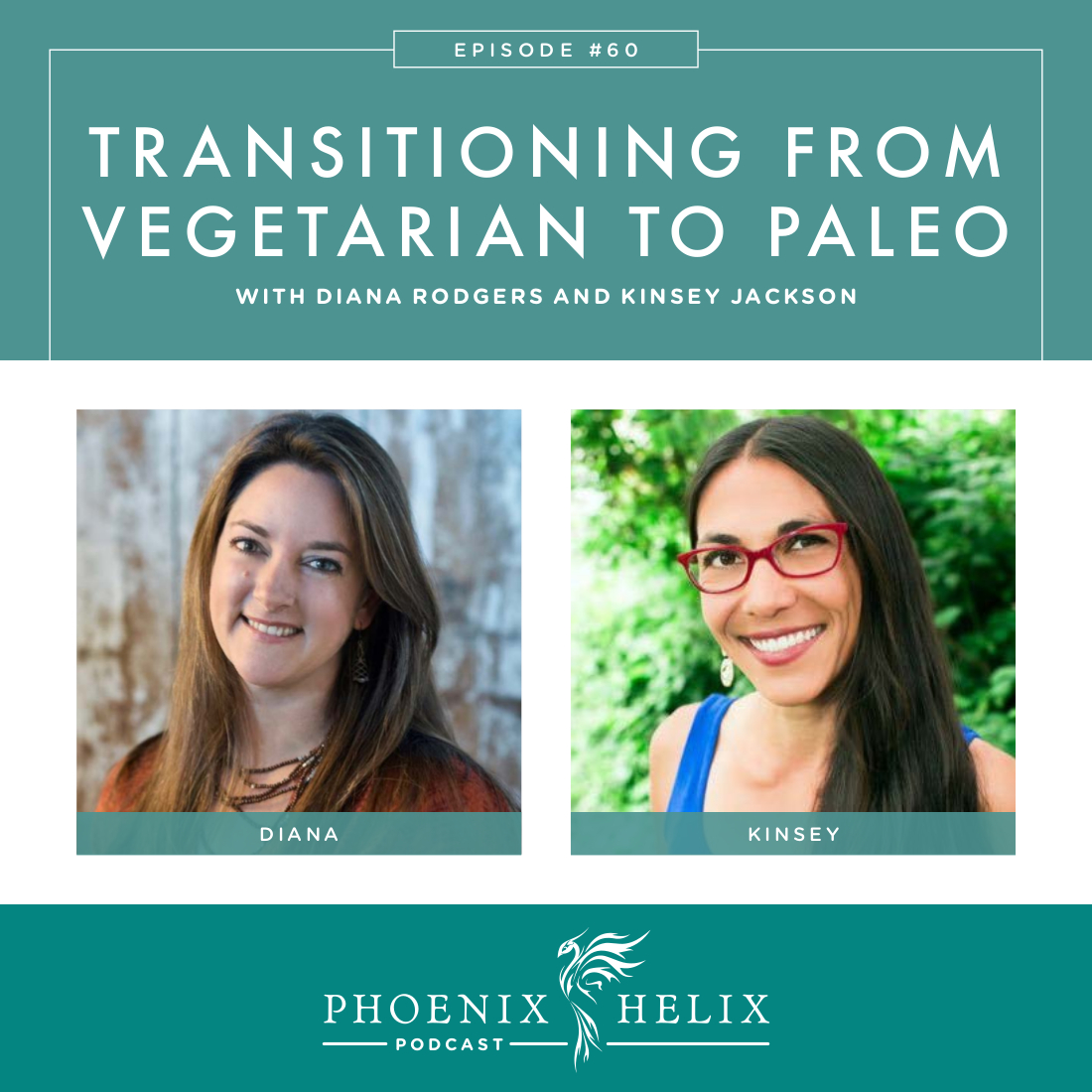

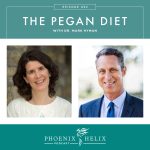
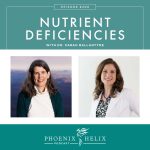
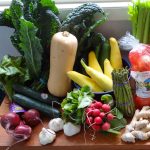
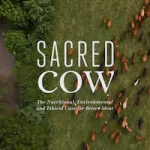
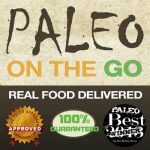

Great episode!! Just one question, would a pesco-vegan diet work sort of like Paleo? I mean, don’t fish and seafood pretty much have all the same nutrients as birds and mammals? If I do the 100g of protein she recommends coming from wild-caught fish and seafood (that includes the entire animal, so organs & bones for example in sardines and salmon), make fish broth, and do the large amoount of vegetables Dr Wahls recommends, whilst being gluten-free and very low sugars/grains, wouldn’t that check the same amount of boxes that the full paleo does?
Hi Rob. Yes, a carefully thought out pesco-vegan diet like the one your describe should be equally beneficial. My only objection would be the grains. I recommend grain-free to start, and then if you’d like to try reintroducing some grains in the future, choose gluten-free. White rice is the recommended first grain to try reintroducing.